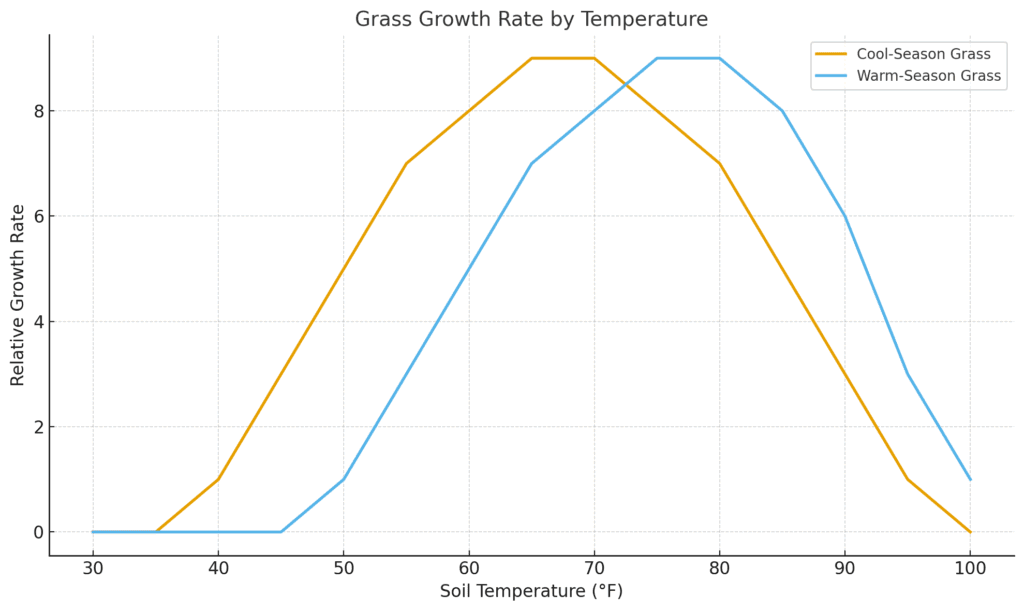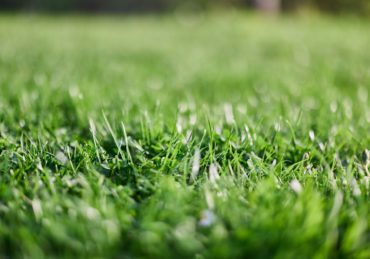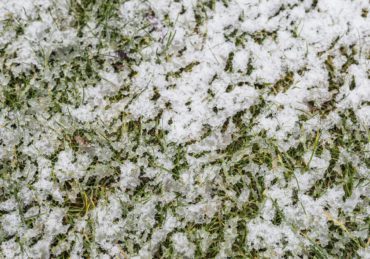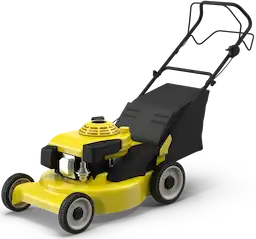You’ve been mowing like clockwork all summer. But by late fall, your lawnmower barely fills a bag, or you skip a week and see almost no difference. So, when does grass stop growing, and does it mean your lawn is dying or just taking a seasonal break?
Here’s what’s really happening under the surface, and how warm-season and cool-season grasses behave differently when growth slows.
How and When Grass Growth Slows (Warm vs Cool Season)
A common neighborly comparison goes like this: “My lawn’s still green, but yours looks like straw.” Most times, it comes down to the type of grass, not a better mower or magic fertilizer.
What Defines Cool-Season Grasses
Cool-season grasses, like tall fescue, Kentucky bluegrass, and perennial ryegrass, thrive in spring and fall. They slow down during summer heat but kick into gear once cooler weather returns. Growth stays steady until air temps dip near freezing and soil temperatures fall below about 45°F (7°C).
These grasses can stay green into November in northern zones, even as growth slows to a crawl. Color isn’t the best signal here, roots might still be active long after the blades stop pushing upward.
What Defines Warm-Season Grasses
Warm-season types, think bermudagrass, zoysia, or centipede, love the heat and get lazy when things cool off. Once soil temperatures drop below 50–55°F (10–13°C), they enter dormancy. That tan or yellow color isn’t disease, it’s just the grass going dormant, like a bear hibernating.
In southern states, these lawns stay green into early November, then quickly brown out as night temps fall. Growth stops well before you see full discoloration.
Takeaway: Know your grass type. It’s the single biggest factor in understanding seasonal slowdowns.
Temperature: The Real Growth Switch
Picture this: It’s mid-October. You mowed two weekends ago, skipped last weekend, and today… still not much change. That’s not laziness, it’s temperature doing its job.
Growth Thresholds for Cool-Season Grasses
Cool-season varieties slow when nighttime temps settle below 50°F (10°C) and daytime highs stay under 60°F (15°C). Once soil dips into the low 40s, upward growth stops altogether.
That doesn’t mean the roots are dead, just that blade growth is on pause. Roots may continue absorbing nutrients and water, especially if the lawn was fertilized earlier.
Growth Thresholds for Warm-Season Grasses
Warm-season types tap out faster. Once soil temps hit the 50°F mark, photosynthesis slows sharply. Above ground, you’ll notice dry or stiff blades; underground, metabolic activity grinds to a halt.
This can happen earlier than expected, even in late October, if there’s a cold snap. And in transition zones, mixed grass lawns may brown unevenly.
Takeaway: Stop relying on the calendar. Start watching the soil thermometer or tracking local overnight lows.

Seasonal Timelines: When Does Grass Stop Growing in Fall?
You hear it every fall: “That’s probably the last mow of the year.” But that date shifts dramatically based on your region and grass type.
Cool-Season Lawns in Cooler Climates
In states like Michigan, Pennsylvania, or Minnesota, cool-season grass usually stops growing between late October and mid-November. Shorter daylight hours and frost-prone mornings shut things down fast.
Expect to mow less often, maybe every two weeks, starting in mid-October. By Thanksgiving, you’re probably done until spring.
Warm-Season Lawns in Southern Zones
Down south, like Texas or Georgia, warm-season grass keeps chugging until early November, sometimes longer. But once nights start dipping into the 40s, dormancy sets in quickly.
Don’t wait for a full color change, growth typically ends 2–3 weeks before the blades turn fully brown.
Pro Tip: Use a soil thermometer (at 2–4″ depth) to check soil temps weekly in late fall. Once readings hold steady below 55°F, you’re likely past the growing phase.
Takeaway: Watch temperatures, not just the leaves on the trees. That first frost doesn’t always line up with the last mow.
What to Do After Growth Stops
It’s early November. You push your mower around, but there’s barely anything to cut. Does that mean you can retire the lawn tools? Almost.
Adjusting Mowing, Watering, and Fertilizing
Once growth slows, shift to maintenance mode.
- Mowing: For cool-season lawns, continue mowing as needed until growth completely halts. Letting grass grow too long before winter invites mold and matting. For warm-season types, you can stop mowing once blade length stays unchanged for 1–2 weeks.
- Watering: Reduce frequency but don’t let the lawn completely dry out if rain is scarce.
- Fertilizer: Avoid heavy nitrogen applications after growth slows. For cool-season lawns, a final light feeding may help with root health. Warm-season grasses don’t benefit from late-season feeding.
Prepping for Dormancy
Now’s the time for cleanup. Remove leaf piles, dethatch, and clear lawn debris. If you’re in a cool-season zone, aeration and overseeding might still be on the table before the ground freezes.
Warning: Mowing when the grass isn’t actively growing can stress turf and tear instead of cut. Always check growth rate before firing up the mower.
Takeaway: Post-growth care matters just as much as peak-season mowing. Give your lawn a clean sendoff into winter.
Region Matters: One Rule Doesn’t Fit All
Let’s say you’re in a place like Kansas, where one week it’s 75°F and the next there’s frost. Growth patterns shift quickly, and not every yard follows the same schedule.
Northern Temperate Zones
In places with long, cold winters, cool-season grass stops growing between late October and early November. Dormancy sets in fast once the frost sticks around.
Southern and Subtropical Zones
For homeowners in states like Florida or southern Texas, warm-season lawns may grow through much of November. Dormancy typically kicks in around December to January, depending on nighttime temperatures.
Transition Zones and Blended Lawns
If you’ve overseeded bermudagrass with rye, your lawn might keep growing into winter, in patches. Expect uneven color, mixed growth rates, and a need to adjust mowing habits by zone.
Note: Soil temps usually lag behind air temps. Just because it’s cold outside doesn’t mean the grass has fully stopped underground.
Takeaway: Read your lawn, not your zip code. Regional averages help, but local microclimates and grass blends determine real-world results.
Frequently Asked Questions
Does grass ever truly stop growing, or just go dormant?
It stops growing above ground, yes, especially when soil temps fall below 45–50°F. But below ground, roots might stay active a bit longer, especially for cool-season types.
Why is my lawn still green but not growing?
Because dormancy doesn’t always mean discoloration. Many cool-season grasses keep their color well into dormancy, even if blade growth halts.
Should I keep mowing into November?
If you’re still seeing growth, yes, but less frequently. If there’s been no blade height change for over a week, and you’re in a cold zone, you’re probably done.
How do I know what kind of grass I have?
Check blade shape, growth habits, and local recommendations. Or ask your lawn care provider. Knowing this helps time all seasonal tasks, from mowing to fertilizing.
Plan for Dormancy With LawnGuru’s Help
Timing lawn care right before winter can be tricky. Mow too late, and you stress the turf. Stop too soon, and you invite disease. We help you dial it in, whether you’re dealing with fescue in the Midwest or bermuda in the South.
Learn more about our seasonal lawn care services and how we tailor support based on your region, your grass type, and your timeline.
Final Thoughts
Understanding when grass stops growing in fall helps you cut out guesswork, save energy, and prevent winter lawn problems. Watch the weather, read your yard, and let the mower rest when your lawn does.
When your grass goes quiet, it’s not quitting, it’s just recharging for spring.





